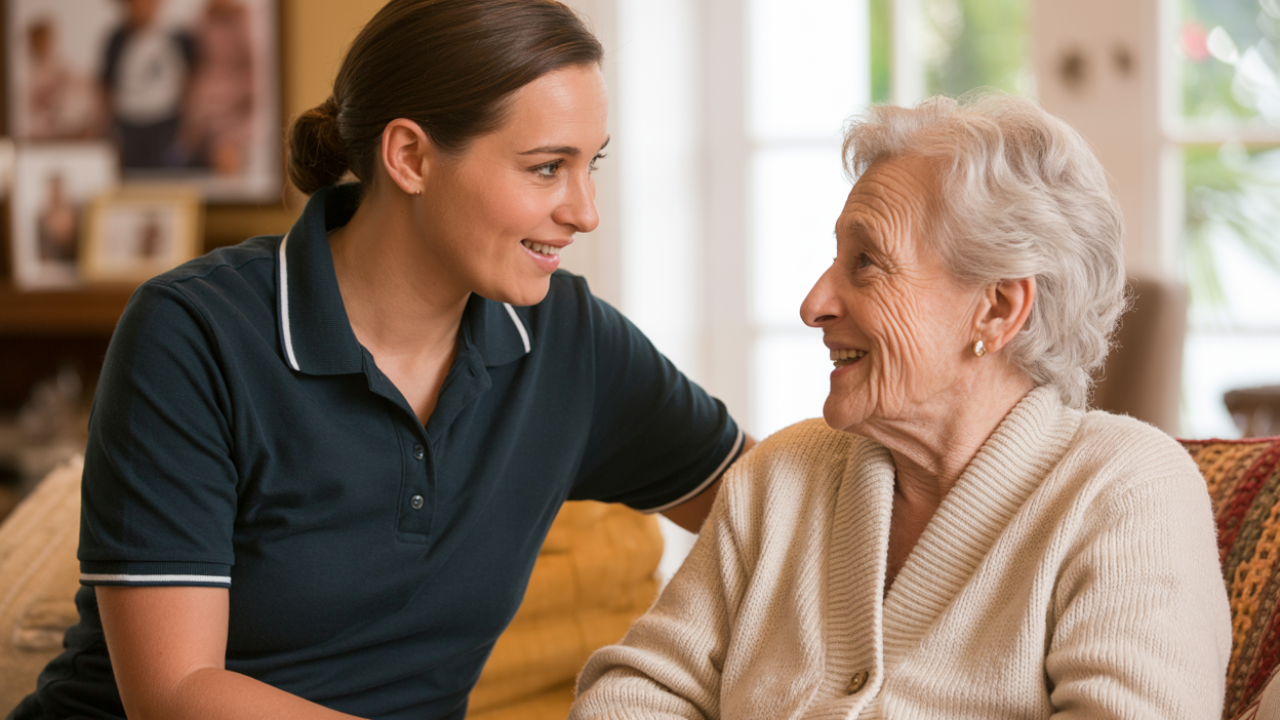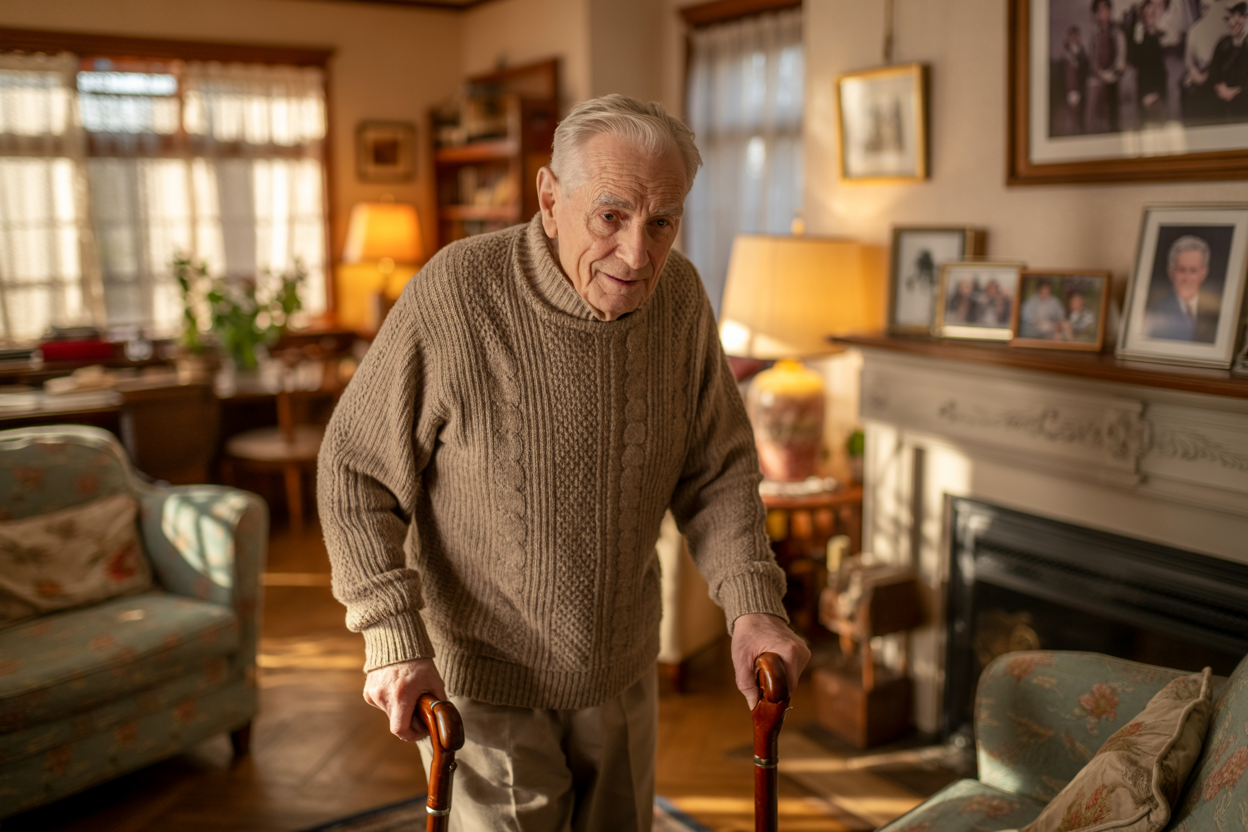
Winter Fall Prevention for Older Adults: The Science of Staying Steady Through Cold Weather
Oct 22, 2025As the days get shorter and the temperatures drop, winter can bring more than just festive cheer and frosty mornings - it can also increase the risk of falls and physical decline for older adults. As the risk of falls increases during this season, it’s important to recognize that falls are a leading cause of serious injury and hospitalization among older people, with many experiencing at least one fall each year.
At EverFit, we believe staying strong and steady through the colder months isn’t just possible - it’s essential. Let’s explore the science behind winter-related balance challenges and what you can do to stay upright, independent, and confident all season long. Winter weather introduces additional risk factors for injuries among older adults, making fall prevention even more critical.

Why Winter Increases Fall Risk
Colder weather isn’t just uncomfortable - it has a real impact on your body’s ability to stay balanced and strong.
Here’s how:
-
Muscles stiffen in cold temperatures, leading to cold muscles that are more prone to injury and can increase fall risk by reducing flexibility and reaction time.
-
Icy paths and wet floors increase the chance of slips. Snow and ice on walkways, driveways, and steps create hazardous surfaces, while using sand can help improve traction and reduce the risk of falling.
-
Falling leaves can create slippery surfaces, especially when wet during autumn and early winter, increasing the risk of slips and falls.
-
Reduced daylight can affect mood, motivation, and physical activity levels.
-
People often move less during winter, leading to deconditioning (loss of strength and stability).
-
Winter shoes or bulky clothing can alter your gait or posture.
These factors put older adults at higher risk of falls during winter.
These seasonal shifts create the perfect storm for falls - but they’re not inevitable.
The (Proven) Power of Movement in Preventing Winter Wobbles
Science shows that exercising - especially strength, balance, and mobility training - and staying active are the most effective ways to reduce fall risk in older adults.
Here’s what the research and our EverFit methodology highlight:
-
Balance and posture can be trained, even in later life. Exercises can be adapted to different positions, such as seated or standing, to suit all abilities.
-
Muscle strength supports joint stability, reducing the risk of injury in case of a slip. Exercising helps improve strength and keep bones strong, lowering the risk of fractures.
-
Mobility and flexibility exercises help maintain stride length and stability on uneven or icy ground.
-
Movement boosts confidence, decreasing the fear of falling (which itself can increase fall risk).
“Even light activity can drastically reduce fall risk. You can be the difference between dependence and independence.” - EverFit Method
Practical Tips to Stay Steady This Winter
Whether you’re an older adult, a family carer, or a wellness professional supporting others—these top tips and expert advice for fall prevention can make a big difference. Follow these fall prevention strategies to stay safe during winter:
1. Start a Daily Strength & Balance Routine
Aim for 10–20 minutes of focused movement each day:
-
Sit-to-stand exercises
-
Single-leg balance (with support)
-
Gentle ankle and hip mobility drills
-
Walk daily, focusing on steady, controlled steps to improve strength and balance
Be sure to include rest periods between exercises to allow your body to recover and prevent overexertion.
2. Create a Safe Indoor Movement Zone
Clear a space in your home where you can move safely:
-
Remove trip hazards
-
Ensure good lighting, especially at night - consider placing a night light near your bed or along hallways to improve safety during nighttime movement
-
Use a sturdy chair or countertop for support
After setting up your space, consider scheduling a home safety check to identify and address potential hazards like poor lighting, loose rugs, or clutter.
3. Warm Up, Even Indoors
Muscles take longer to warm up in cold weather. Spend 3-5 minutes gently warming your body before starting exercise - even if you're staying indoors.
4. Keep Your Confidence High
Fear of falling can cause hesitation and stiffness, making falls more likely. Use simple mindset shifts like:
-
“I’m training for independence.”
-
“I’m strong and getting stronger.”
Building confidence is part of the EverFit approach.
Dress for Success: Footwear and Clothing That Keep You Steady
When it comes to preventing falls during the winter months, what you wear can make all the difference. Icy surfaces and slippery paths are common hazards, but choosing the right footwear and clothing can help you stay steady and confident.
Start with shoes that offer a good grip - look for non slip soles and sturdy construction that support your feet and ankles. Appropriate footwear, such as boots or shoes with deep treads, can help reduce the risk of falls by providing stability on wet or icy ground. Avoid smooth-soled shoes or worn-out footwear, as these can increase your risk of slipping.
Layering up is also key. Wearing warm, comfortable clothing helps keep your muscles from getting cold and stiff, which can affect your balance and make falls more likely. Don’t forget to wear gloves when heading outdoors; not only do they protect your hands from the cold, but they also improve your grip if you need to steady yourself on a railing or support.
By dressing for the winter season with the right footwear and clothing, older adults can take a big step toward preventing falls and staying safe, no matter how chilly it gets outside.
Tools for Stability: How Assistive Devices Can Help
For many older adults, assistive devices are a simple yet powerful way to prevent falls and stay steady on their feet - especially when winter brings slippery surfaces and unpredictable weather.
Walking sticks, canes, and walkers provide extra support and balance, making it easier to navigate icy paths or uneven ground. To maximize safety, make sure your assistive device is in good condition and fitted with non-slip tips for better grip. If you feel unsteady when standing up or sitting down, use a sturdy chair or countertop for support.
Don’t hesitate to use these tools, even indoors, if you feel your risk of falling is higher during the winter months. Taking these simple steps can make a big difference in preventing falls and maintaining your confidence and independence. Remember, assistive devices are there to support you - so use them whenever you need a little extra help staying steady.

Winter Wellness: Managing Health Conditions for Better Balance
Staying healthy is a crucial part of falls prevention, especially during the winter season when cold weather and icy surfaces can increase the risk of falling. Certain health conditions - like poor eyesight, low blood pressure, or chronic illnesses - can affect your balance and make you more vulnerable to falls.
Regular eye tests are essential for identifying vision changes that could impact your ability to spot trip hazards or navigate slippery surfaces. Make sure your glasses prescription is up to date, and don’t ignore any changes in your vision.
Managing chronic health conditions is equally important. Conditions such as diabetes or heart issues can cause dizziness or make you feel lightheaded, raising your risk of falling. Work with your doctor to keep these conditions under control, and don’t skip your regular check-ups during the winter months.
Staying hydrated is another simple but effective way to support your balance and overall health. Dehydration can sneak up during colder months, leading to dizziness and increasing your risk of falls. Drink plenty of water or warm, non-caffeinated drinks throughout the day.
By taking a proactive approach to managing your health and staying informed about falls prevention, you can make a big difference in your ability to stay steady and safe all winter long.
EverFit in Winter: A Holistic Approach
EverFit isn’t just about exercises - it’s a structured, supportive system designed to empower people to take control of their health year-round, including winter. Our certified practitioners deliver safe, tailored programs focused on:
-
Strength, balance, mobility, and flexibility
-
Fall risk assessment and prevention strategies
-
Confidence-building communication and motivation
Older adults can contact their local council for support services such as home safety checks and handyperson schemes. A family member can also help with tasks like clearing snow and ice from walkways to reduce hazards. Disease control is crucial in preventing injuries related to falls during winter, especially when snow and ice increase risks. Sensory problems affecting sight and hearing can increase the risk of falling, but assessments are available to help address these issues. Fall detection technology can alert caregivers if someone has fallen, providing added safety and reassurance. For more fall prevention advice, visit your healthcare team or trusted online resources. Stay informed by signing up for updates or newsletters about fall prevention and safety.
And because EverFit integrates movement into daily routines, it’s designed to work with real life - not against it.
Final Thoughts: Winter is No Excuse to Slow Down
Winter might challenge your balance, but with the right science-backed strategies, you can stay steady, strong, and independent all season long.
So this year, instead of hibernating - mobilise. Stay active, stay empowered, and remember: movement is medicine, especially when it’s cold outside.
Don't miss a beat!
New moves, motivation, and classes delivered to your inbox.
We hate SPAM. We will never sell your information, for any reason.

